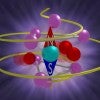
Atomic dance gives rise to a magnet
Rice researchers turned a paramagnetic material into a magnet by manipulating electrons’ spin via atomic motion.

Atomic dance gives rise to a magnet
Rice researchers turned a paramagnetic material into a magnet by manipulating electrons’ spin via atomic motion.
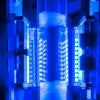
Rice lab’s catalyst could be key for hydrogen economy
A light-activated catalyst efficiently converts ammonia into clean-burning hydrogen using only inexpensive raw materials.
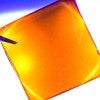
Solvent study solves solar cell durability puzzle
Rice engineers simplify the manufacture of high-efficiency perovskite solar cells.

Reconstructing ice age diets reveals unraveling web of life
Rice-led research published in Science offers a clear picture of the consequences of land mammal declines on food webs.
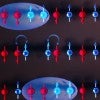
Rice lab’s quantum simulator delivers new insight
A Rice University quantum simulator is giving physicists a clear look at spin-charge separation, a bizarre phenomenon in which two parts of indivisible particles called electrons travel at different speeds in extremely cold 1D wires. The research is published this week in Science and has implications for quantum computing and electronics with atom-scale wires.
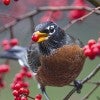
Lost birds and mammals spell doom for some plants
In one of the first studies of its kind, researchers have gauged how biodiversity loss of birds and mammals will impact plants’ chances of adapting to human-induced climate warming.

A recently arrived Rice University professor preparing to study quantum systems assembled from the ground up with individual atoms has two significant papers on which to build his reputation.

Biologists construct a ‘periodic table’ for cell nuclei
A team of biologists studying the tree of life has unveiled a new classification system for cell nuclei, and discovered a method for transmuting one type of cell nucleus into another.
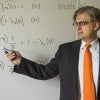
How to stop the next pandemic: Reduce wildlife trafficking and forest loss
The ultimate global financial cost of COVID-19 could top $15 trillion, but governments might be able to prevent future pandemics by investing as little as $22 billion a year in programs to curb wildlife trafficking and stem the destruction of tropical forests, according to a new paper from an international team of scientists including Rice University's Ted Loch-Temzelides.
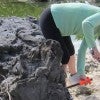
Coral tells own tale about El Niño’s past
Researchers from Rice and Georgia Tech studied ancient Pacific corals to improve computer model predictions of El Niño events.
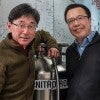
Study finds billions of quantum entangled electrons in 'strange metal'
Rice physicists and collaborators have observed quantum entanglement among "billions of billions" of flowing electrons in a quantum critical material.
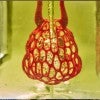
Organ bioprinting gets a breath of fresh air
Bioengineers have cleared a major hurdle on the path to 3D printing replacement organs with a breakthrough technique for bioprinting tissues.